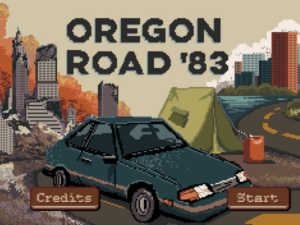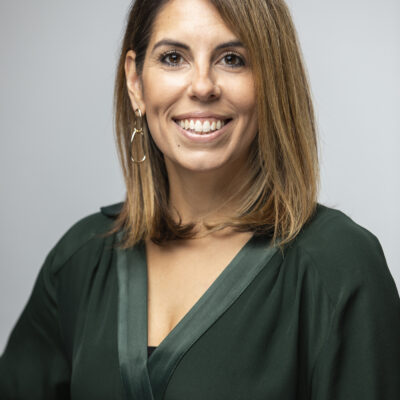
For most of us, the notion of nuclear threat is impossibly abstract—even as Russia continues to threaten nuclear action against Ukraine and allied NATO countries. It’s not something people generally want to talk about.
And yet, Christopher Nolan’s “Oppenheimer,” about J. Robert Oppenheimer, father of the atomic bomb, has the world in rapt attention. While the film is no doubt garnering a reexamination of Oppenheimer’s work to win World War II, much more clarity is needed to understand efforts to prevent, mitigate, and resolve nuclear tensions worldwide.
Understanding that existing nuclear tensions and the explosion of disinformation could escalate to nuclear war, the Outrider Foundation has dedicated half of its efforts to journalism and multimedia storytelling that address nuclear threats. The other wicked, complex issue Outrider is all in on? Climate change.
Outrider’s objectives are clear: show how climate change and nuclear weapons policies affect our lives and translate that knowledge into smart policy and positive impacts. We can’t act on what we don’t know. Here, Outrider President and CEO Robert K. Elder shares the organization’s vision for a more livable planet by investing in new audiences, platforms, and media.
Nina Sachdev, Director of Communications, Media Impact Funders: What’s missing from conversations around nuclear threats and climate change? How is the storytelling you’re supporting addressing the challenges and/or providing solutions around these incredibly complex topics?
 Robert K. Elder, President and CEO, Outrider Foundation: Because they are incredibly complex topics, they need human storytelling to ground them and illustrate their impact on our communities. I always think of Nigel Poor, who co-founded the amazing Ear Hustle podcast. She says, “I’m not moved by numbers and statistics. I’m moved by storytelling and the sound of someone’s voice.”
Robert K. Elder, President and CEO, Outrider Foundation: Because they are incredibly complex topics, they need human storytelling to ground them and illustrate their impact on our communities. I always think of Nigel Poor, who co-founded the amazing Ear Hustle podcast. She says, “I’m not moved by numbers and statistics. I’m moved by storytelling and the sound of someone’s voice.”
That’s why we invest in projects and partners with the most impact. I’m obsessed with impact and return on investment. It’s a joke around the office that we could turn it into a drinking game. Whenever I say “impact,” – my staff takes a shot. That’s not true, of course! Everyone would be drunk by 10 a.m., which would lessen our impact.
Our blueprint of change is that an informed, engaged public leads to political will and better policy changes. We’ve seen that over and over in journalism’s impact on public awareness and opinion.
For example, a story came out of our Bloomberg Green fellowship, “Amazon Packages Burn in India, Final Stop in Broken Recycling System.” After publication, local officials outlawed this practice. That’s impact.
Nina: Let’s talk about Outrider’s evolution. Outrider was established in 1999 by Frank Burgess, who founded Madison Funds 40-plus years ago. How has Outrider’s approach changed over time?
Robert: Outrider started as a family foundation, supporting local Wisconsin charities on various community issues. Eight years ago, Frank converted Outrider into an operating foundation and widened its scope to address nuclear threats and climate change.
 I joined the team as the new President and CEO in May 2022, and my goal was to build on Outrider’s momentum and solid reputation. My vision has been to build on Outrider’s legacy by focusing on co-publishing and funding important journalism with outlets with established or growing audiences. We have positioned ourselves to be entrepreneurial and future-focused. Outrider is investing in new audiences, digital platforms, and emerging media.
I joined the team as the new President and CEO in May 2022, and my goal was to build on Outrider’s momentum and solid reputation. My vision has been to build on Outrider’s legacy by focusing on co-publishing and funding important journalism with outlets with established or growing audiences. We have positioned ourselves to be entrepreneurial and future-focused. Outrider is investing in new audiences, digital platforms, and emerging media.
We’re a bit like ProPublica in that we create in-house media projects — like the upcoming nuclear-themed video game Oregon Road ’83 with Alex Wellerstein — while working on high-impact reporting partnerships and growing our fellowship program. We’ve also doubled the number of stories we publish on our website.
Today, we have fellowships at TIME, Bloomberg Green, public radio’s Science Friday, and the Black Diplomats podcast. We also teamed up with the Carnegie Corporation of New York to fund a three-year investigative project on nuclear security with the Associated Press.
Nina: You’ve got some interesting and beautiful visualization tools on your website. There’s a nuclear bomb blast simulator, which allows the user to see how a nuclear bomb would affect their community. And there’s an interactive map that allows the user to see the national and local impacts of climate change. Clearly, visual storytelling is central to your approach. What are some outcomes of this work?
Robert: Social media has devoured our attention, and most of it is visual content. We believe you must create beautifully designed digital experiences to cut through the noise and get the public’s attention. Our biggest success story is our bomb blast simulator.

More than 5 million people around the globe have used the nuclear blast simulator, most of them between the ages of 18 and 25. Making nuclear threats top of mind for a younger generation is an essential investment in a safe and secure future.
We also created a short film commemorating the 50th anniversary of Earth Day, which has been viewed by more than a million people. We’re excited about some upcoming (super secret) projects we have in the works that will build on this legacy of visual storytelling.
Nina: We’re sharing more images now than at any point in history, yet the number of visual storytellers and journalists has declined significantly in recent years. What key themes stand out when you think about the importance of supporting visual storytelling for the public interest? Is there more to be done in philanthropy to support this component of the media ecosystem?
Robert: This is an enormous challenge for the media industry, especially as artificial intelligence makes audiences even more skeptical of things they see online. But we know that photography is a powerful communication tool that can show as much as it tells. That’s essential in a media ecosystem where readers are increasingly focused on skimming social news feeds instead of reading lengthy news articles.
We need to continue supporting the production and distribution of visual journalism from reputable sources that illustrate the human impacts of these issues by making them relevant on a personal, local level.
Nina: When you joined MIF in 2022, we discussed some of your longer-term goals. In the last year alone, you’ve launched journalism fellowships, announced a new Advisory Board, and ramped up co-funded projects with partners like the Prospect Hill Foundation, Carnegie, and the Dubin Foundation. How’s all that going? Any lessons to share from that type of collaboration with news organizations and other funders?
Robert: It’s been going fantastic, and honestly, we’ve exceeded our own expectations.
Journalism is facing an existential crisis; even for-profit legacy news outlets are not immune to economic headwinds. The internet and predatory investment firms have devastated journalistic institutions over the last 25 years.
We see the support of journalism as not only addressing a market failure but also protecting a free press, which is vital to a healthy democracy.
John Palfrey, president of the John D. and Catherine T. MacArthur Foundation, has talked about journalism as a cultural institution that the philanthropic community must support. His argument, which I find compelling, is: We support other community-good and democratic institutions such as libraries, universities, museums, symphonies, and arts organizations — journalism should be thought of in those same terms. This will require a shift in philosophy, but I believe it’s the right direction.
On a granular level — if we don’t support it, no one will.
While we’ve seen growth in climate change reporting, we’ve seen the erosion of expertise and dwindling coverage of nuclear issues. If we don’t support reporting on these topics, there will be fewer nuclear reporters, fewer nuclear investigations, and fewer informed discussions in the culture. Awareness and concern will drop, and the public will lose touch with these important issues that endanger humanity.
Nina: What insight or advice would you offer a funder who may be interested in making media and journalism grants?
Robert: Know who your audience is and what your goals are. Be clear to your staff, your board, and yourself. It’s OK to make mistakes but learn from them (quickly). Make big bets and monitor your impact.
But most importantly: Act now.
